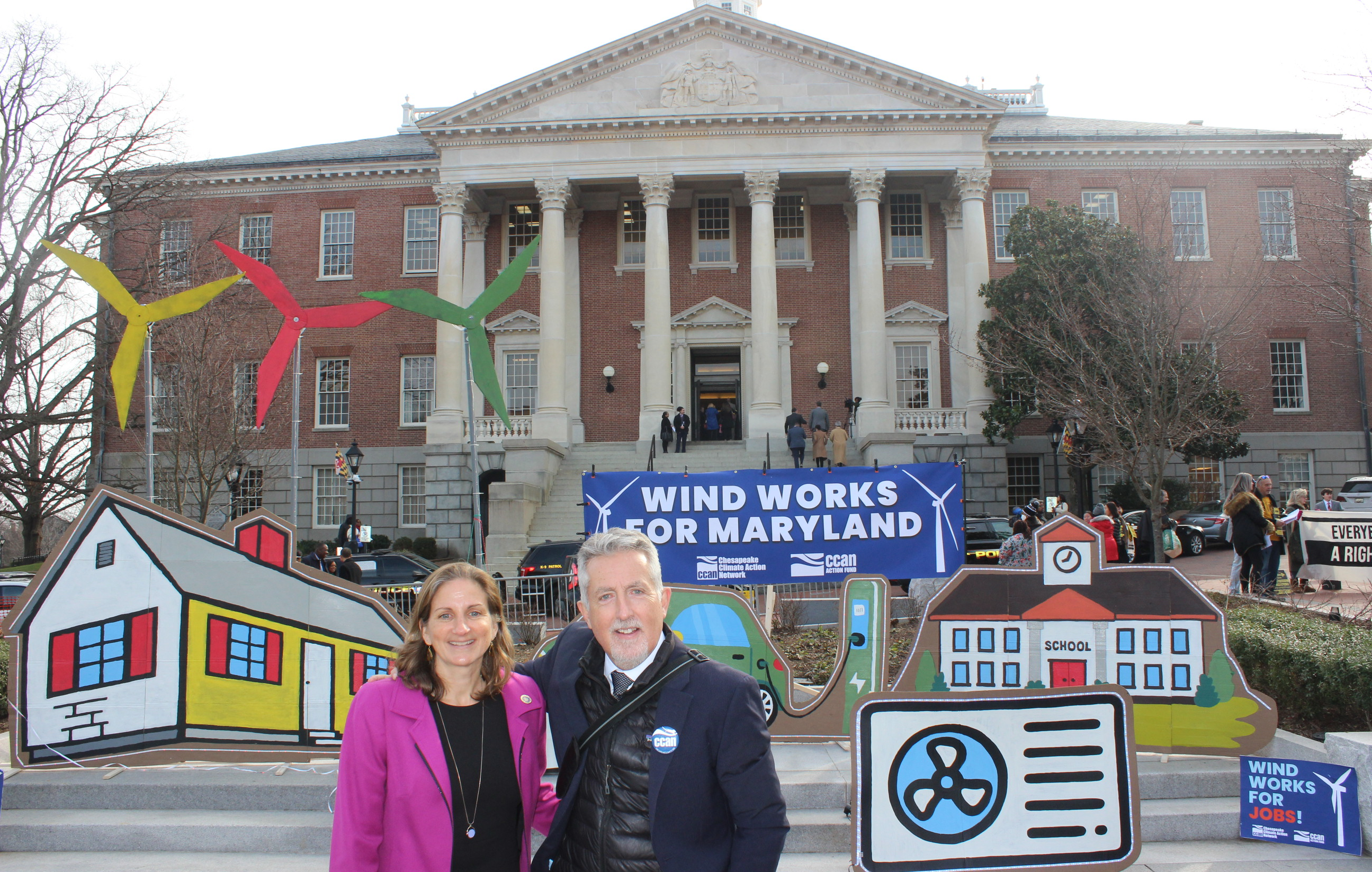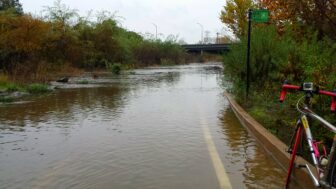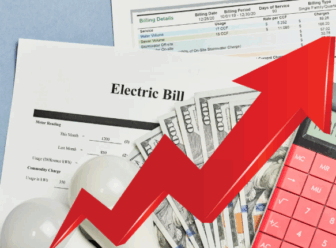Op-ed by Jamie DeMarco initially published in The Daily Record.
Offshore wind is bringing union careers to Maryland, lowering utility bills, and improving our health, but the turbines under development today will not be enough to achieve our goals. In 2022, Maryland passed the Climate Solutions Now Act, which requires the state to slash our emissions 60% by 2031. In order to meet this ambitious legal mandate, we must invest in more offshore wind energy and the transmission infrastructure needed to support it.
Offshore wind, Onshore Benefits
Just last year, the Public Service Commission approved applications from Orsted’s Skipjack Wind and US Wind’s Momentum Wind, bringing the total offshore wind market in Maryland to 2 Gigawatts. These projects are on track to be completed and generating energy in 2026. The four projects approved in Maryland (two from US Wind and two from Orsted) have already produced significant economic and workforce benefits to Maryland. Maryland’s Public Service Commission required the two wind companies to invest $115 million in manufacturing facilities and port upgrades in and around Sparrows Point, or a similar port facility, and contribute $6 million to an offshore wind business development fund.
Those offshore wind projects brought union steel jobs back to Maryland. In August of 2021, US Wind announced plans to build a new steel fabrication facility at the Tradepoint Atlantic site in Baltimore County, now called Sparrows Point Steel. With this announcement, they also announced a $77 million investment in a 90-acre port facility and labor agreements with the Baltimore-D.C. Building & Construction trades union and the International Brotherhood of Electrical Workers to provide union labor to support US Wind’s Maryland projects. Orsted has also invested in the local supply chain and has teamed up with Crystal Steel Fabricators, located in Federalsburg, MD, to supply steel components for wind turbines up and down the East Coast, further establishing Maryland as a supply hub for the offshore wind industry.
Significant investments in offshore wind can also lower energy costs for Marylanders. According to a new report from Gabel Associates, these benefits for ratepayers could be significant. If Maryland builds an additional 6,000 MW of offshore wind in the Central Atlantic it could save Maryland $5.3 billion over the 30-year lifetime of the projects. Setting aside the huge environmental and health benefits that offshore wind will provide; ratepayer benefits could measurably outweigh the cost of building this additional offshore wind capacity. Even in the highest-cost scenario the report models, benefits to Marylanders, including ratepayer, economic, and environmental benefits, outweigh the generation costs associated with 6,000 MW of offshore wind.
Clearly, wind works for Maryland. To bring even greater economic and health benefits to our state, the Maryland General Assembly should pass legislation in 2023 to invest in offshore wind development by setting an offshore wind goal of at least 8.5 GW by 2031, initiating a state process to coordinate transmission infrastructure, and investing in the full build-out of the existing lease areas.
An offshore wind energy goal
Many states, in our region and beyond, have established offshore wind development goals through executive orders or legislation. These goals help signal to the market and regulators on the federal and state level that the state is friendly to offshore wind and has aspirations for investments in the industry. Setting a total of 8.5 GW as our state’s goal will help establish Maryland as an epicenter for additional development.
Transmission
In order for offshore wind to be useful, it must be brought ashore. Unfortunately, offshore wind projects in Maryland face a significant barrier to connecting to the grid. Transmission has been handled in the past on a project-by-project basis; to improve efficiency, experts recommend a more coordinated approach that would reduce congestion of multiple lines, increase carbon reduction potential and minimize environmental impacts. By passing legislation to direct the state to manage a competitive transmission procurement, Maryland could establish a coordinated transmission network that solves the issue of interconnection and builds resilience and reliability on our grid.
Building out the existing lease areas
Both Orsted and US Wind have existing space in their lease areas for roughly 700 – 800 additional megawatts each but the current policy (largely the Offshore Wind Renewable Energy Credit price cap) does not allow for additional development without impacting rate-payers. However, if additional projects could be built without the cost or risk accruing to ratepayers, Maryland could benefit from up to 1600 MW of additional offshore wind energy. This would be possible by having the state directly purchase the energy through the Department of General Services. This energy would serve the state government’s energy needs and then the surplus could be sold on the energy market for revenue.
Our state has been a leader in addressing the climate crisis and setting ambitious climate pollution reduction and clean energy goals. However, those goals can’t be reached without investments to our transmission infrastructure. We also have an opportunity to work with the White House and leverage federal dollars from the Inflation Reduction Act and the Infrastructure Investment and Jobs Act. The Biden/Harris Administration has set a goal of 30 additional gigawatts of domestic offshore wind by 2030. The momentum for offshore wind is undeniable but Maryland legislators must act in 2023 to ensure Maryland sees the benefits of this clean energy revolution.
Jamie DeMarco is Maryland director, Chesapeake Climate Action Network and CCAN Action Fund.





